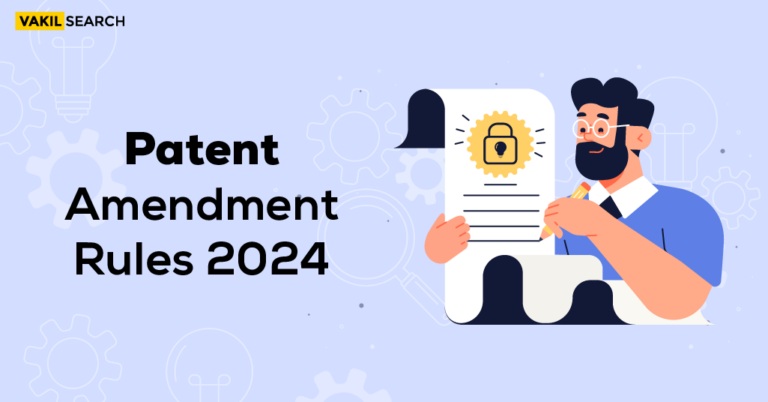In this article we will take a look at the procedure through which a commercial idea can be Internationally Patent and be protected in multiple countries through a single application
Businesses operate in a highly competitive atmosphere now more than ever. With the coming of the internet, commerce has truly gone global. This means that good business ideas and innovations can be commercialised on a global scale almost instantaneously. But this also means that your ideas and inventions are exposed to intellectual property theft on a much wider range. And hence, there have been several attempts by international trade bodies to create some sort of a common forum that respects intellectual property rights across borders so that global free markets can prevail in the true sense without any unfair trade practices. In this article we will discuss about how to protect your patent (Protecting inventions in India) internationally.
There are some things that still need to be improved on an international platform. As of today no such thing as an “international patent” exists. In other words, there is no organisation that provides patent rights that can be applicable across all countries with a single application; and to obtain separate patents in different countries can be an expensive affair.
The only alternative currently available with any semblance of an international patent application is the provision to file an application through the Patent Cooperation Treaty (PCT) that was arranged by World Intellectual Property Organisation during its Paris convention in 1970 which was signed by 193 member countries with an understanding that any intellectual property application protected under this treaty would be be respected and upheld within the trade borders of all member countries of the pact.
However, there are some rules and regulations that the applicant of the patent should take into consideration prior to making an application. For example, if an Indian company is selling its products in the USA and UK respectively, then they should apply for a patent in the respective countries. But, if the same Indian company is selling their products to more than three countries, then the best option would be to take the patent via PCT. Let us take a look at how one can go about filing patent application through this medium.
Filing An Application Under Patent Cooperation Treaty
PCT is an international treaty that aims to simplify the process of patent e filing applications across an array of countries. PCT is managed by WIPO (World Intellectual Property Organization). As of 2022, WIPO has a total of 193 member states to the Patent Cooperation Treaty (PCT).
The PCT patent application consists of two phases: National and International. They allow patent protection for an invention in a large number of countries by filing a single “international” patent application instead of filing various separate national or regional patent applications. The complete procedure is under the control of the national or regional patent offices known as the “National Phase”.
The below steps help to acquire a patent under PCT:
Patent Filing Process
- File an international application with a national or regional patent office or WIPO.
- The form should be filled in a single language and fees should be paid.
- First, it should be filed with the Indian Patent Office (IPO) for India and then it gets transferred to the International Bureau (IB), WIPO, Geneva.
- Details such as request, description, claims, drawing, translations, etch should be mentioned in the form.
Important details in the form are:
- Name of the invention/Title
- Name of the applicant/His or her nationality/Address
- There should be a preamble of the description of the invention
- All the claims with signature at the last page of the application
Incorporating all these details in the application would increase the chances of approval. If there is an objection raised to the application, the applicant is given a time period of 12 months to make the required modifications and refer it back to the organisation. Due to any reason, if the applicant does not respond in the stipulated time frame, then the application will be dismissed.
International Search
The primary organisation that decides whether your document or work of invention can have a patent or not is the International Searching Authority (ISA). It’s job is to perform a thorough search for similarities between any fresh applications and existing approved patents before giving a further go ahead to get a work patented.
International Publication
After 18 months from the initial filing date, the quantum of your international applications is unveiled to the world.
Basis For Opposition
After the patent application has been filed, various opposition claims have to be resolved by the applicant. Below are some possible objections that can be raised against an application:
- The patent is unfairly obtained
- The patent is under the subject of a prior publication
- The invention is publically known and used prior to the date of that claim
- There is an inventive step involved
- The invention is very apparent and universal
- The subject does not fulfil the condition of an “invention” under the act
- There has been a wrong reference to the facts and material used for the invention
- The application was not made within 12 months from the date of the first application.
These are some of the grounds which can be held very vital in opposition to the application. The applicant or their legal representative should take proper steps.
National Phase In India
It is important that the international phase is followed by the national phase for obtaining a patent under PCT.
After the international search or preliminary examination i.e. after the completion of the PCT application procedure, applications for the grant of patents can be applied before the national (or regional) patent offices of the countries in which patent protection is desired before 30 months from the date of PCT approval.
The further procedures of filing, fee and processing are done as per the demands of national law in relation to patents in each country.
The international filing date is considered as the initial filing date in all such countries.
A national phase application has to be filed prior to the termination of the 31 months from the initial filing date of the application. The international application, which is filed under the PCT, acts as a corresponding application in India.
Conclusion
It is evident that there are several technical prerequisites that are essential for an invention to get a patent at an international level. And while an invention and their commercial designs have technicalities of their own, the regulatory technicalities of the paperwork for filing a patent application are a different ball game that requires specialised knowledge and ample experience in these matters. So it is always advisable to engage a legal expert or an experienced professional who can not only guide you but represent you in the matters before such authorities so as to ensure that your intellectual property is protected comprehensively and you can leverage the full potential of your innovation in international markets. If you have any queries or require any assistance with regards to intellectual property rights, get in touch with us and our team of IP experts will get in touch with you to assist you with your requirements.
Also, Read










